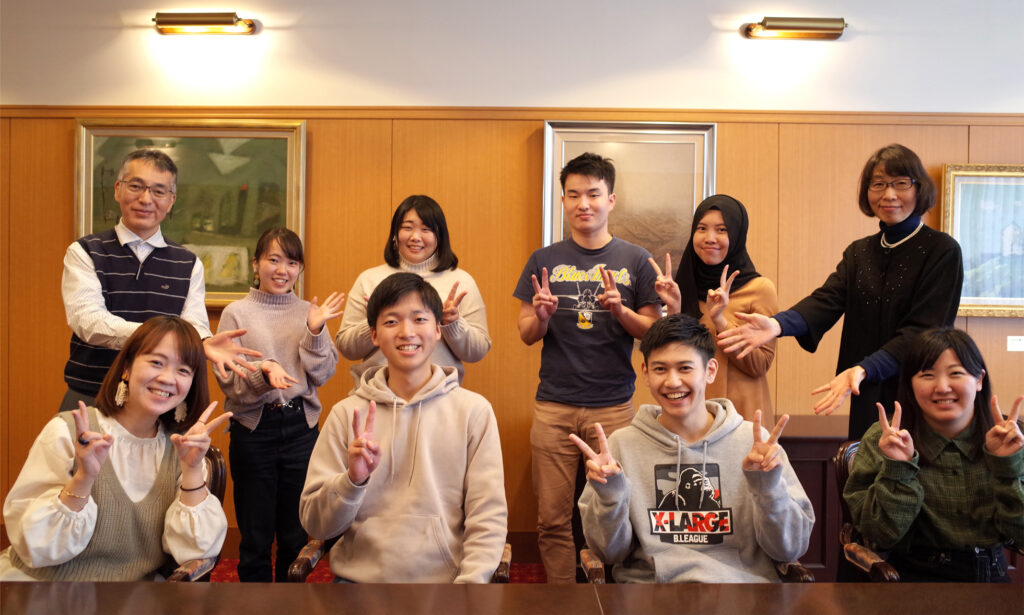発生再生シグナル研究ユニット
研究紹介
発生再生シグナル研究ユニットでは、私たちの体の形づくりの基本となる中胚葉・神経組織の形成機構、および幹細胞組織の形成・維持や組織再生の機構を調べています。「私たちの体の各部分は、どのようにして作られるのでしょうか?」 「なぜ両生類は失った組織・器官を再生できるのでしょうか?」 これらの疑問に答えることが、研究目標です。受精卵から個体を形成するまでの過程を「発生」と呼びますが、カエルの卵は、ヒトやマウス(哺乳類)と比べると、とても大きく、動物の発生・再生現象を容易に調べることが出来ます。発生の進行も早く、遺伝子導入やゲノム編集の手法も確立されているので、体の形づくりを調節している遺伝子の機能も迅速に解析できます。また、ヒト疾患の原因遺伝子をカエルの実験系で解析することで、疾患の発症機構を詳細に調べることが可能です。最近では、Zbtb14遺伝子が背腹軸と頭尾軸の形成に重要なこと(2018年)、自閉症関連遺伝子・Clk2が神経形成を促進すること(2019年)、またJunB遺伝子が組織再生に必須であること(2020年)を発見しました。

最近のトピック
- InhibinβA(アクチビン)とJunBによる新しい組織再生機構を発見しました 2024-02-14
- 竹林公子さん(鈴木 厚研究室・研究員)が、日本発生生物学会が発行するDevelop. Growth Differ.誌の論文賞を受賞しました。(2019/05/16) 2019-05-16
- レジーナさん(鈴木 厚研究室・D2大学院生)が、第52回日本発生生物学会大会において神経形成に関する口頭発表を行いました。(2019/05/15) 2019-05-15
- 中村 誠さん(鈴木 厚研究室・D1大学院生)が、中国四国地区生物系三学会合同大会広島大会において再生研究に関する口頭発表をおこない、若手研究者優秀発表賞を受賞しました。(2019/05/12) 2019-05-12
- 卒論・修論・実験・論文と目標に向かって、みんな頑張っています。ホット一息ティータイム!(鈴木 厚研究室;2019/01/17) 2019-01-17
研究室の1コマ

歓迎会の様子です。研究補助のメンバーも含めて楽しくやっています!
スタッフ
*「広島大学研究者総覧」では教員の連絡先、教育担当状況、研究業績などが閲覧できます(公開項目は教員によって異なります)。
学生・大学院生
小池 遼太(D3)
西嶋 龍太郎(D1)
ユニットからのメッセージ
生物科学科の学生はもとより、他大学からの学生や留学生も集い、研究室は賑やかです。研究室のメンバーと共に、基礎科学に貢献し、近い将来に医学・薬学の役に立つような研究を目標にしています。高校生の教科書に載るような重要な発見を目指しています。また、教育面では、中学・高校教員との連携も行っています。一緒に楽しく研究しましょう!

